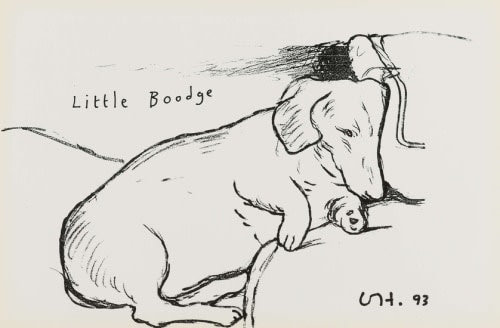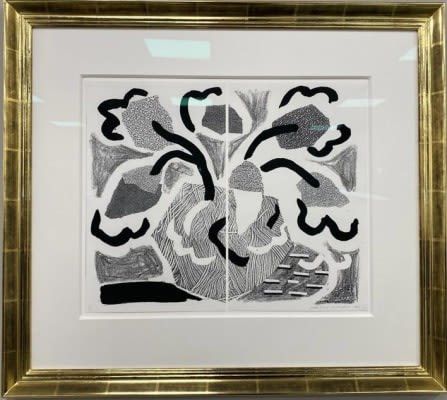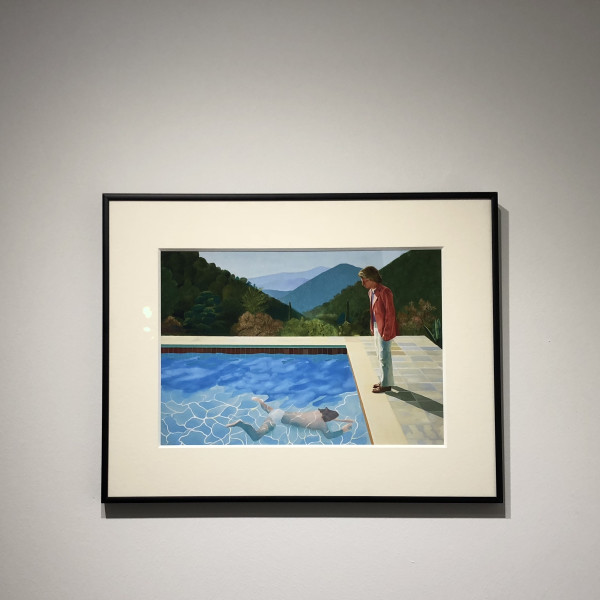David Hockney
-
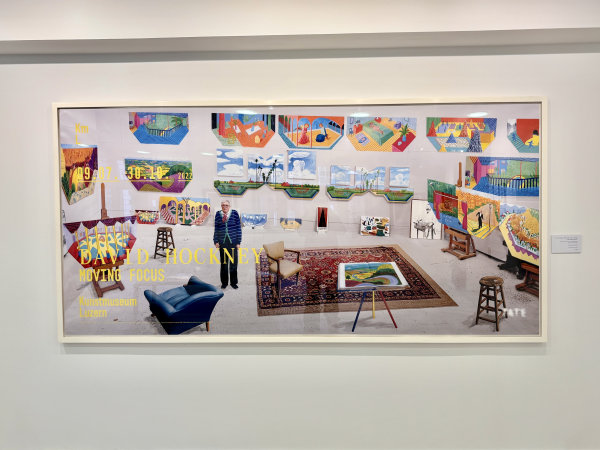 In the Studio, December 2017 - Detail , 2017
In the Studio, December 2017 - Detail , 2017 -
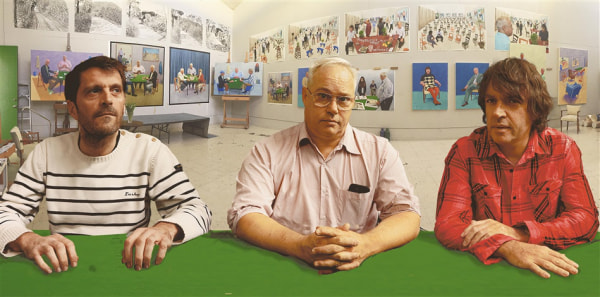 JP, JW, JM, In The Studio, 2015
JP, JW, JM, In The Studio, 2015 -
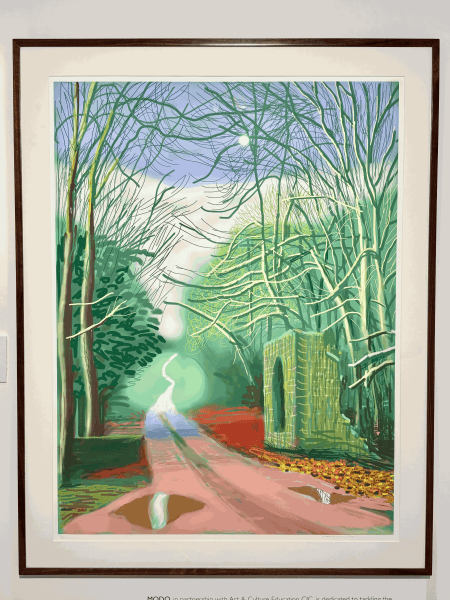 The Arrival of Spring in Woldgate East Yorkshire, 19th February 2011, 2011
The Arrival of Spring in Woldgate East Yorkshire, 19th February 2011, 2011
-
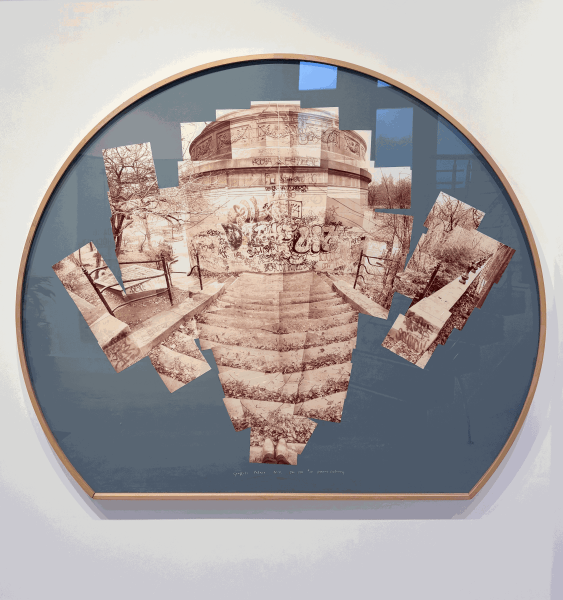 Grafitti Palace, NY Dec 1982 , 1982
Grafitti Palace, NY Dec 1982 , 1982 -
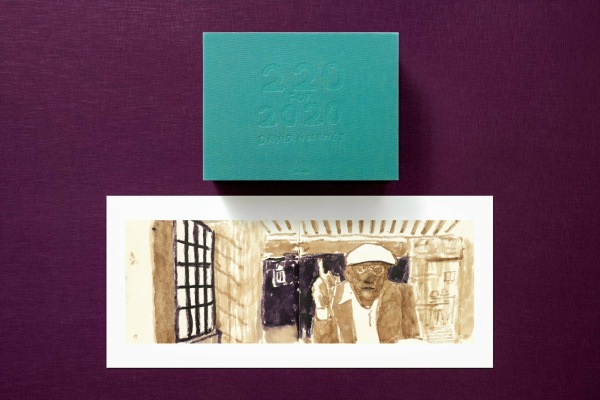 220 for 2020. Art Edition No. 101–200 ‘Self-Portrait in My Living Room’, 2022
220 for 2020. Art Edition No. 101–200 ‘Self-Portrait in My Living Room’, 2022 -
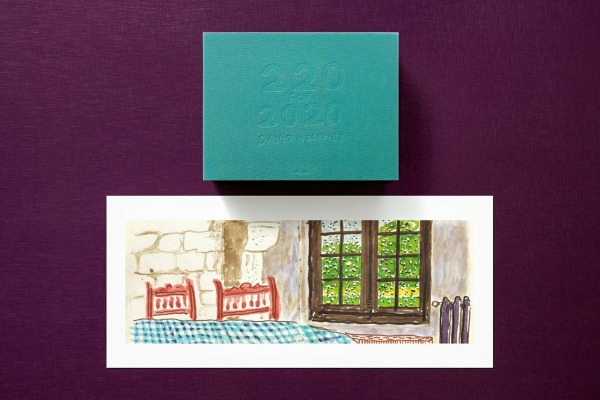 220 for 2020. Art Edition No. 201–300 ‘Two Chairs and Rain on Window’, 2022
220 for 2020. Art Edition No. 201–300 ‘Two Chairs and Rain on Window’, 2022
-
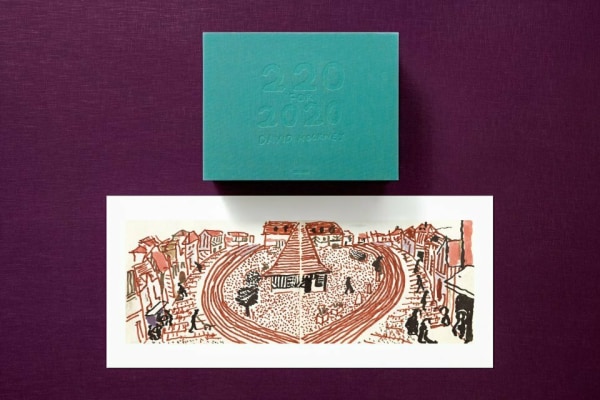 220 for 2020. Art Edition No. 301–400 ‘My Second Drawing of Beuvron-en-Auge’, 2022
220 for 2020. Art Edition No. 301–400 ‘My Second Drawing of Beuvron-en-Auge’, 2022 -
 David Hockney. My Window. Art Edition (No. 251–500) ‘No. 281’, 23rd July 2010, 2019
David Hockney. My Window. Art Edition (No. 251–500) ‘No. 281’, 23rd July 2010, 2019 -
 David Hockney. My Window. Art Edition (No. 751–1,000) ‘No. 778’, 17th April 2011, 2019
David Hockney. My Window. Art Edition (No. 751–1,000) ‘No. 778’, 17th April 2011, 2019
-
 David Hockney. My Window. Art Edition (No. 750–1000) ‘No. 610’, 23rd December 2009, 2019
David Hockney. My Window. Art Edition (No. 750–1000) ‘No. 610’, 23rd December 2009, 2019 -
 16th February, 2021, More Flowers in a Glass Vase, 2021
16th February, 2021, More Flowers in a Glass Vase, 2021 -
 15th March 2021, Flowers in a Jug, 2021
15th March 2021, Flowers in a Jug, 2021
-
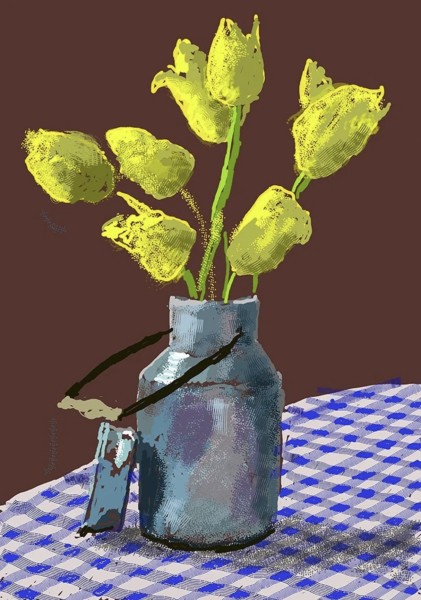 21st April 2021, Yellow Flowers in a Small Milk Churn, 2021
21st April 2021, Yellow Flowers in a Small Milk Churn, 2021 -
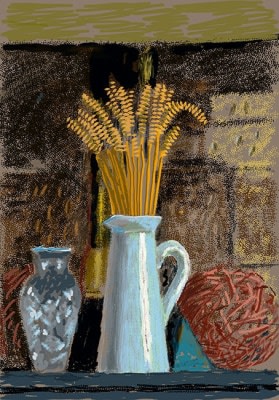 Glass Vase, Jug and Wheat, 2020
Glass Vase, Jug and Wheat, 2020 -
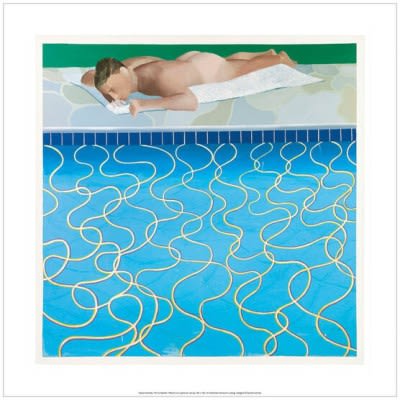 The Sunbather, 1966, 2017
The Sunbather, 1966, 2017
-
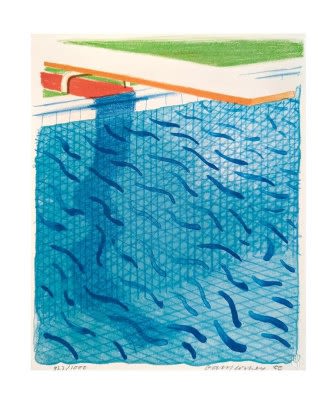 Pool Made with Paper and Blue Ink for Book, 1980
Pool Made with Paper and Blue Ink for Book, 1980 -
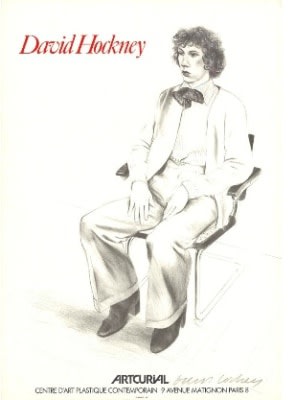 Hand Signed Artcurial, 1979
Hand Signed Artcurial, 1979 -
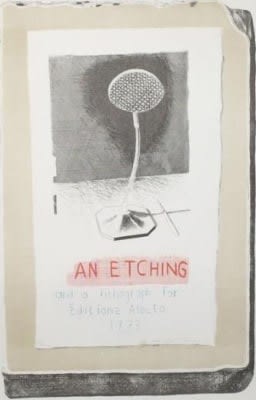 David Hockney Original Poster 'An Etching of a Lithograph' for Editions Alecto , 1973
David Hockney Original Poster 'An Etching of a Lithograph' for Editions Alecto , 1973
-
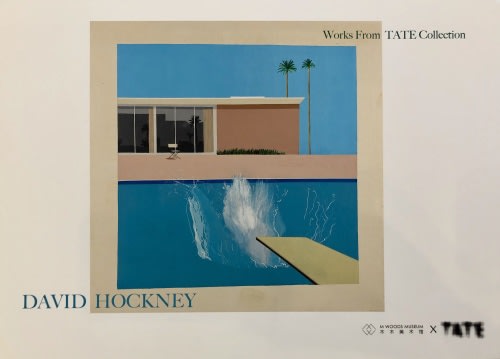 A Bigger Splash, 1967, 2019
A Bigger Splash, 1967, 2019 -
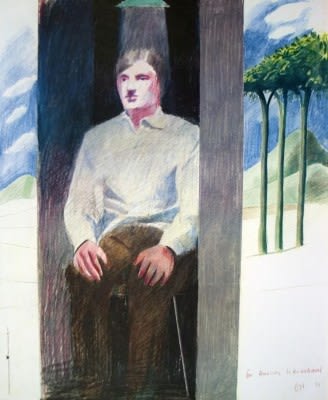 David Hockney Original Poster 'Prisoner, for Amnesty International' , 1977
David Hockney Original Poster 'Prisoner, for Amnesty International' , 1977 -
 ‘Remember that you cannot look at the Sun or Death for very long’, 2021
‘Remember that you cannot look at the Sun or Death for very long’, 2021
-
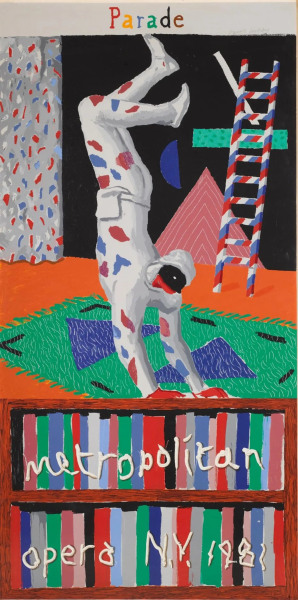 Parade, 1981
Parade, 1981 -
 A Lawn Sprinkler - Japanese Poster, MOCA Tokyo, 2023
A Lawn Sprinkler - Japanese Poster, MOCA Tokyo, 2023 -
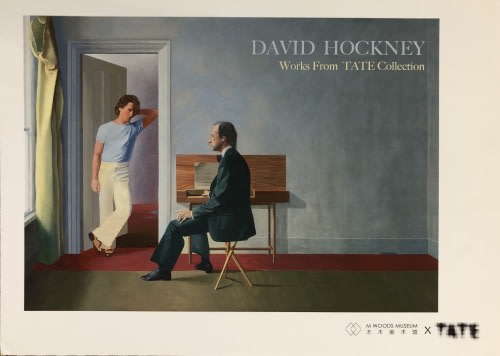 George Lawson and Wayne Sleep 1972-75, 2019
George Lawson and Wayne Sleep 1972-75, 2019
-
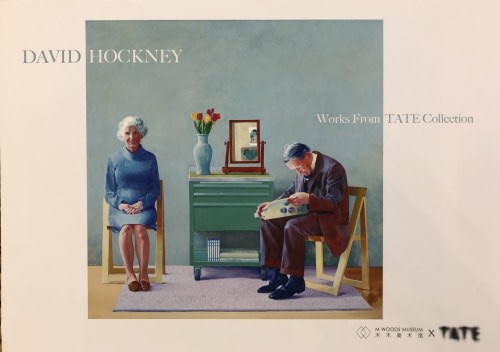 My Parents, 1977, 2019
My Parents, 1977, 2019 -
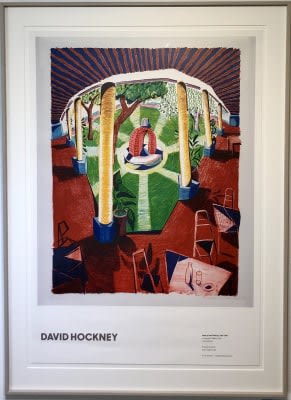 Views of Hotel Well III, 1984-1985, 2019
Views of Hotel Well III, 1984-1985, 2019 -
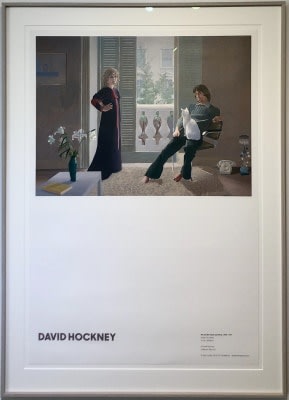 Mr and Mrs Clark and Percy, 1970-71, 2019
Mr and Mrs Clark and Percy, 1970-71, 2019
-
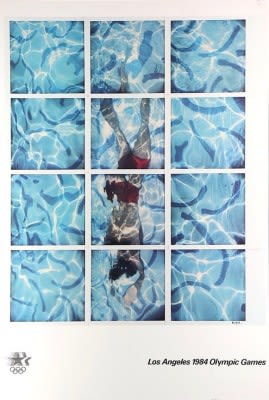 Hand Signed Los Angeles 1984 Olympic Games, 1984
Hand Signed Los Angeles 1984 Olympic Games, 1984 -
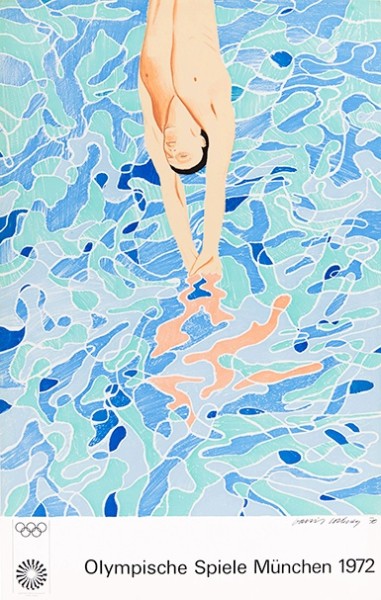 David Hockney Original Poster Munich Olympics (Olympische Spiele Munchen) , 1972
David Hockney Original Poster Munich Olympics (Olympische Spiele Munchen) , 1972 -
 David Hockney Original Poster Boy Hidden in an Egg (Galerie Der Speigel)., 1981
David Hockney Original Poster Boy Hidden in an Egg (Galerie Der Speigel)., 1981
-
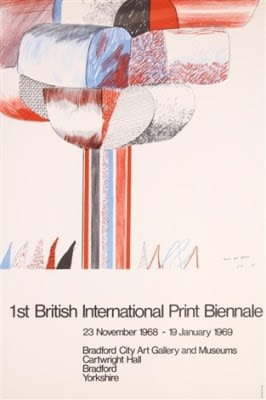 David Hockney Original Poster British International Print Biennale , 1968
David Hockney Original Poster British International Print Biennale , 1968 -
 David Hockney Original Poster 'Still Life With Flowers', 1988
David Hockney Original Poster 'Still Life With Flowers', 1988 -
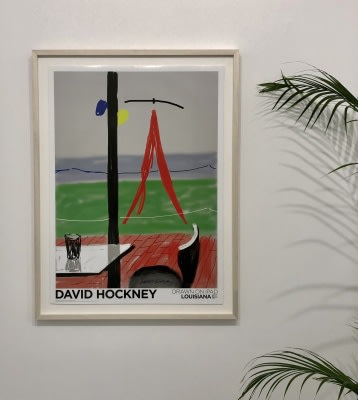 Untitled, iPad. Louisiana Denmark, 2009
Untitled, iPad. Louisiana Denmark, 2009
-
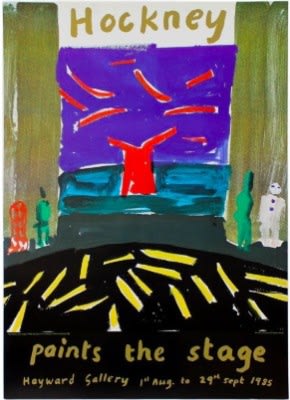 Hockney 'Paints the Stage' Original Poster, 1985
Hockney 'Paints the Stage' Original Poster, 1985 -
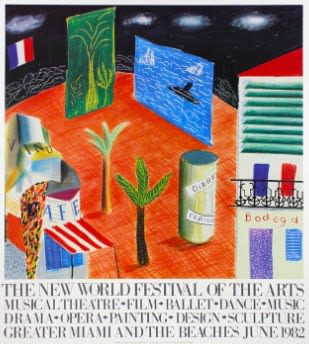 David Hockney Original Poster 'The New World Festival of the Arts', 1984
David Hockney Original Poster 'The New World Festival of the Arts', 1984 -
 David Hockney Original Poster 'Ravels Garden Hockney Paints the Stage' , 1983
David Hockney Original Poster 'Ravels Garden Hockney Paints the Stage' , 1983
-
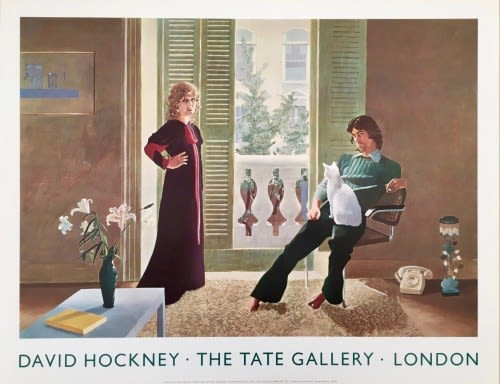 David Hockney Original Poster 'Mr and Mrs Clark and Percy' , 1974
David Hockney Original Poster 'Mr and Mrs Clark and Percy' , 1974 -
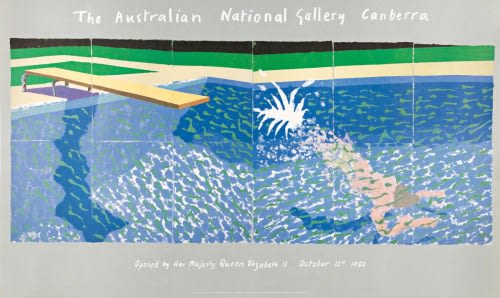 A Diver, Australian National Gallery, Canberra., 1982
A Diver, Australian National Gallery, Canberra., 1982 -
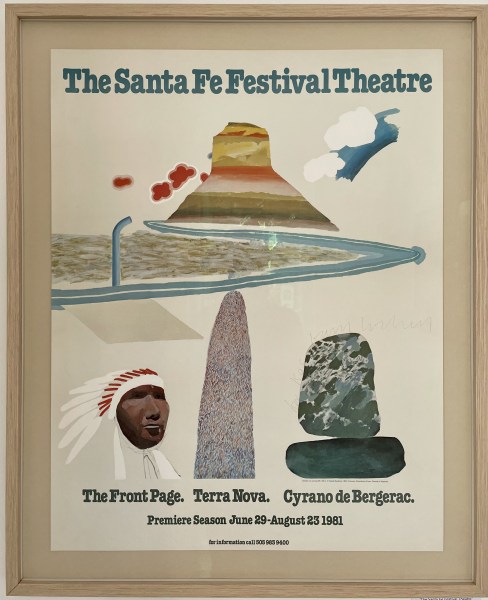 Hand Signed 'The Santa Fe Festival Theatre', 1981
Hand Signed 'The Santa Fe Festival Theatre', 1981
-
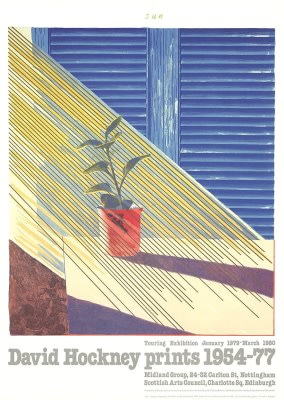 David Hockney 'Sun' Poster, 1981
David Hockney 'Sun' Poster, 1981 -
 Orpheus and Eurydice , 1997
Orpheus and Eurydice , 1997 -
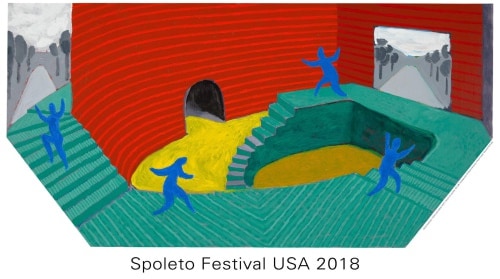 Hither and Dither Spoleto Festival 2018, 2018
Hither and Dither Spoleto Festival 2018, 2018
-
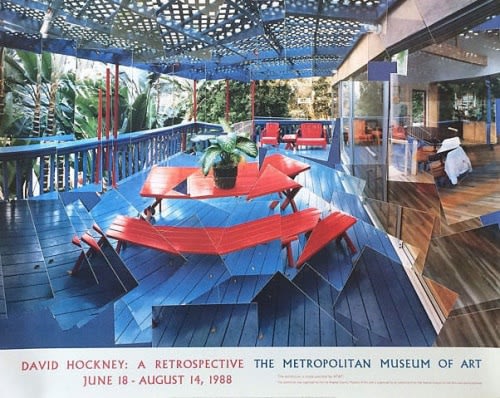 Terrace Without Shadows, 1988
Terrace Without Shadows, 1988 -
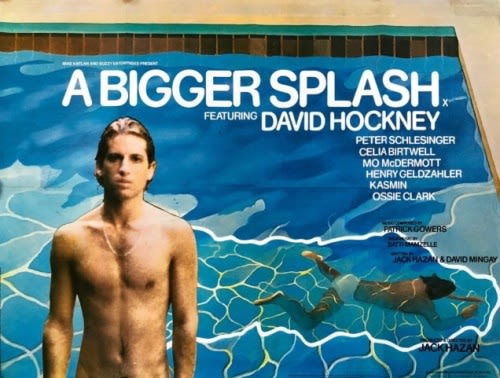 David Hockney Original Film Poster 'A Bigger Splash' , 1974
David Hockney Original Film Poster 'A Bigger Splash' , 1974 -
 Drawing from Life, 2020
Drawing from Life, 2020
-
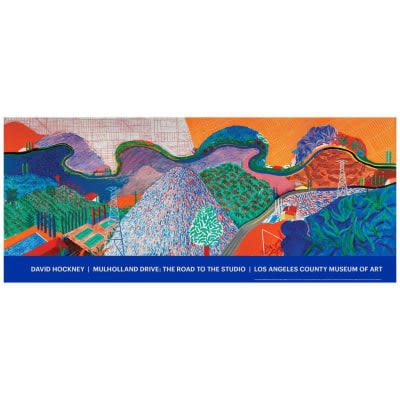 Mulholland Drive, The Road to the Studio, 2020
Mulholland Drive, The Road to the Studio, 2020 -
 Paper Pool 13 (Plongeoir avec ombre) 1978 , 2022
Paper Pool 13 (Plongeoir avec ombre) 1978 , 2022 -
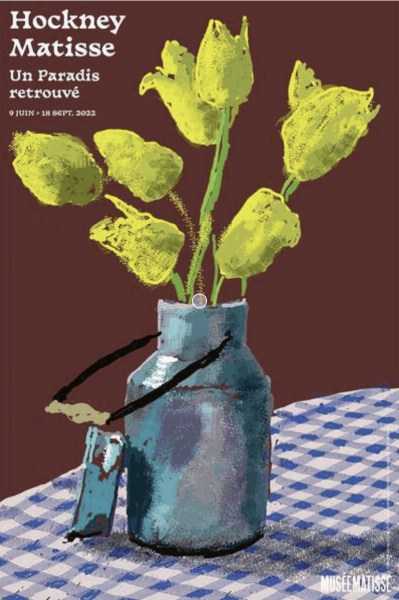 21st April 2021 (Fresh Flowers), 2022
21st April 2021 (Fresh Flowers), 2022
-
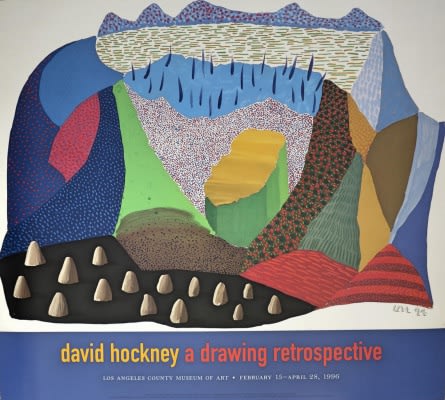 David Hockney A Drawing Retrospective, 1996
David Hockney A Drawing Retrospective, 1996 -
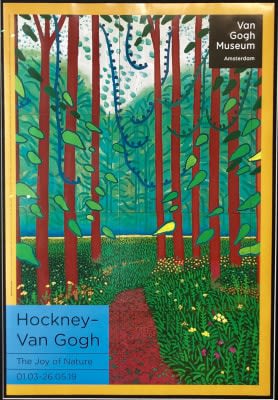 Hockney - Van Gogh 'The Joy of Nature' , 2019
Hockney - Van Gogh 'The Joy of Nature' , 2019 -
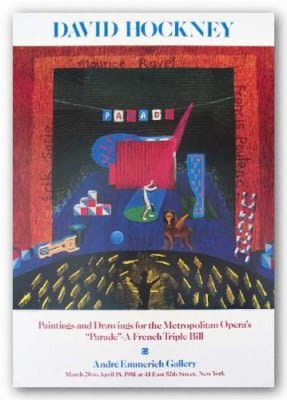 David Hockney Original Poster 'Paintings and Drawings for the Metropolitan Opera's Parade', 1981
David Hockney Original Poster 'Paintings and Drawings for the Metropolitan Opera's Parade', 1981
-
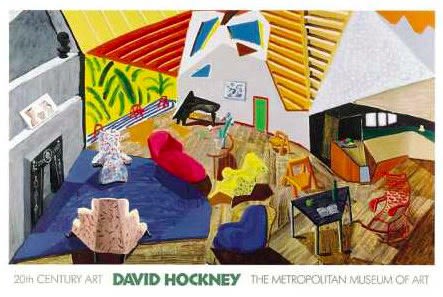 'Large Interior, Los Angeles', 1990
'Large Interior, Los Angeles', 1990 -
 David Hockney Original Poster 'The Maelstrom Bodo', 2002
David Hockney Original Poster 'The Maelstrom Bodo', 2002 -
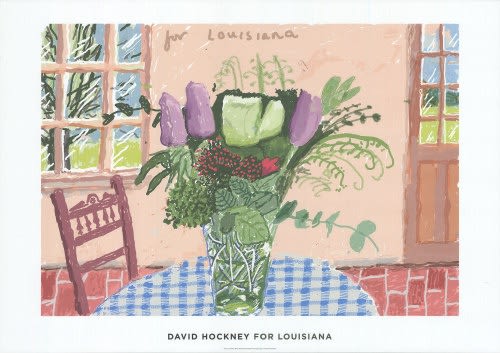 22nd December 2020, 2020
22nd December 2020, 2020
-
 David Hockney Poster 'A Bigger Splash' - Met New York Retrospective, 2017
David Hockney Poster 'A Bigger Splash' - Met New York Retrospective, 2017 -
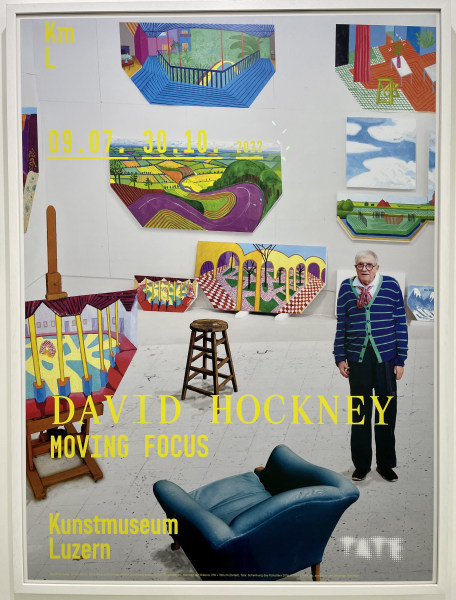 David Hockney: Moving Focus, 2022
David Hockney: Moving Focus, 2022 -
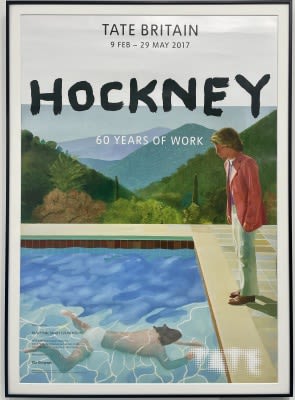 Hockney 60 Years of Work Tate Retrospective, 2017
Hockney 60 Years of Work Tate Retrospective, 2017
-
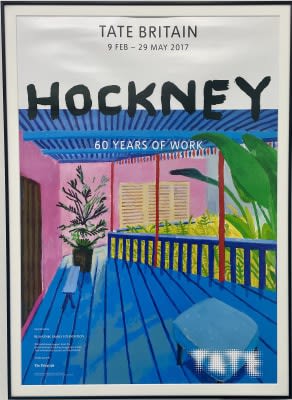 Hockney 60 Years of Work, 2017
Hockney 60 Years of Work, 2017 -
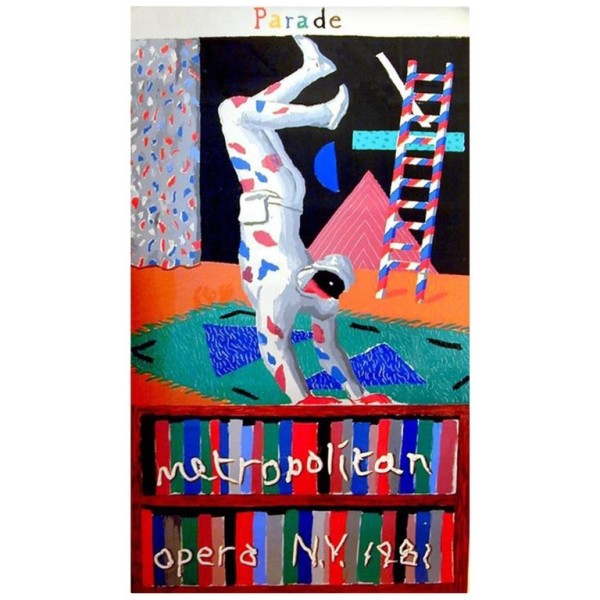 Original 'Parade' Screen Print , 1981
Original 'Parade' Screen Print , 1981 -
 'David Hockney Photoworks Retrospective', 1999
'David Hockney Photoworks Retrospective', 1999
-
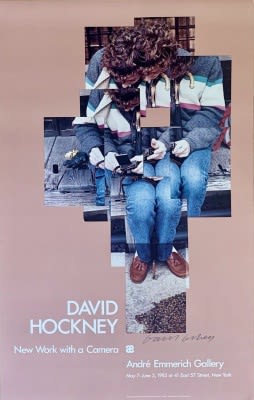 Hand Signed 'New Work with a Camera', 1983
Hand Signed 'New Work with a Camera', 1983 -
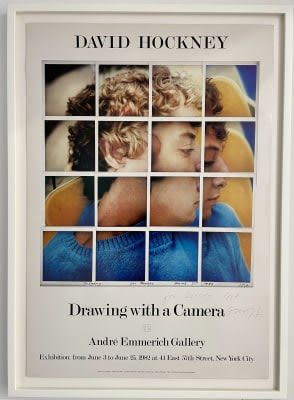 'Drawing with a Camera', 1982
'Drawing with a Camera', 1982 -
 Hand Signed 'In Color: Ten California Photographers', 1983
Hand Signed 'In Color: Ten California Photographers', 1983
-
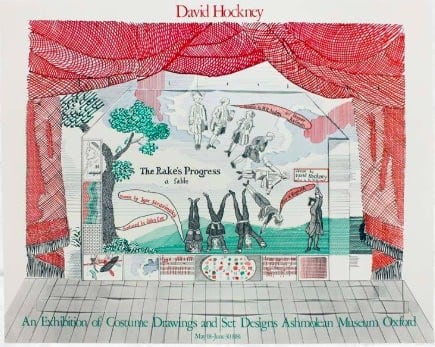 David Hockney Original Poster 'The Rake's Progress Ashmolean', 1981
David Hockney Original Poster 'The Rake's Progress Ashmolean', 1981 -
 David Hockney Original Poster Francisco Opera 1982 , 1982
David Hockney Original Poster Francisco Opera 1982 , 1982 -
 David Hockney Original Poster 'Cameraworks', 1982
David Hockney Original Poster 'Cameraworks', 1982
-
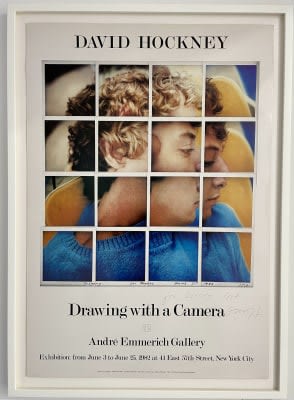 David Hockney Original Poster 'Drawing with a Camera', 1982
David Hockney Original Poster 'Drawing with a Camera', 1982 -
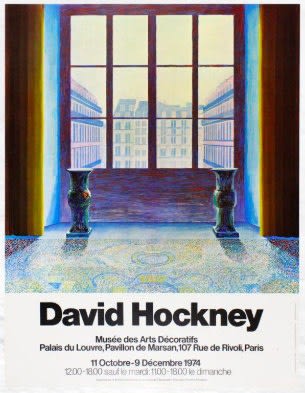 David Hockney Original Poster 'Two Vases in the Louvre', 1974
David Hockney Original Poster 'Two Vases in the Louvre', 1974 -
 David Hockney Original Poster 'Content + Context', 1985
David Hockney Original Poster 'Content + Context', 1985
-
 Two Pots on the Terrace, 2016, 2022
Two Pots on the Terrace, 2016, 2022 -
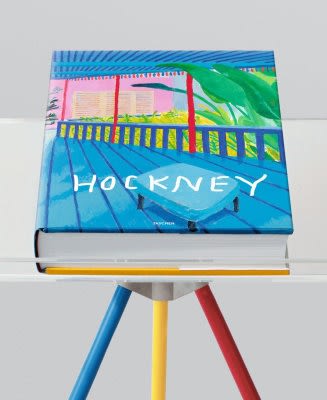 A Bigger Book, David Hockney Sumo by Taschen For Sale, 2017
A Bigger Book, David Hockney Sumo by Taschen For Sale, 2017 -
 David Hockney. My Window, 2019
David Hockney. My Window, 2019
A pioneer of the 1960s British movement, David Hockney is the most prominent living artist of the 20th and 21st century. Diverse and innovative, Hockney came to prominence with his depictions of gay love. His 1972 Portrait of an Artist (Pool with Two Figures) sold for 90.3 million dollars in 2018, setting an auction record for a living artist. Progressive in theme and pioneering in method, Hockney’s 60 years of work spans acrylic paintings, photo collages, opera sets and iPad drawings.
-

Hockney's Spirit of Innovation
MODO 10 Feb - 25 Jul 2025As a gallery specialising in David Hockney’s work MODO has curated Hockney’s Spirit of Innovation, an exciting exhibition that perfectly encapsulates MODO’s mission. Hockney’s relentless pursuit of new artistic frontiers from traditional painting to digital experimentation mirrors our belief in art as a driver of progress, innovation and transformation.Read more -

For the Love Of...
18 Jan - 7 Mar 2024Read more -

Contemporary Idols
23 Nov - 28 Dec 2023Read more
